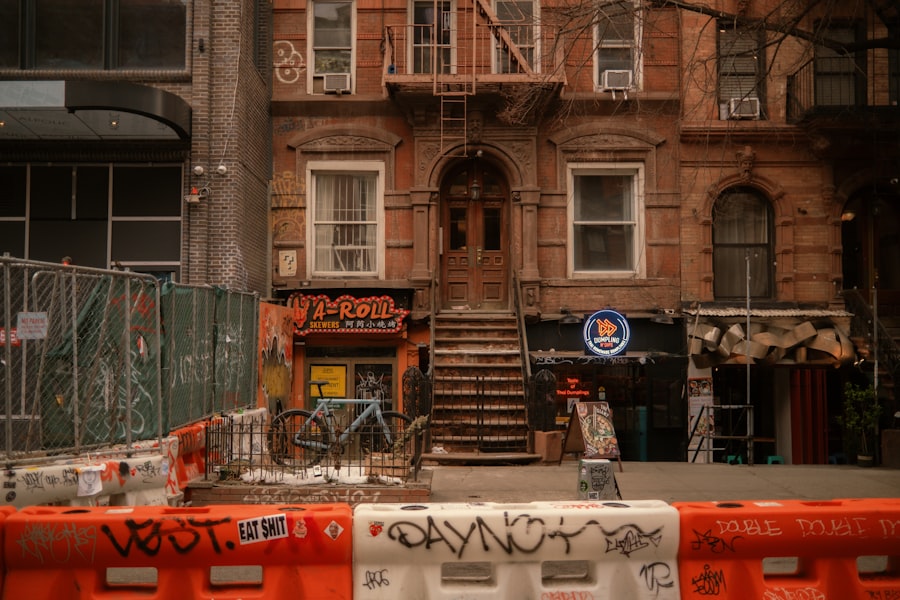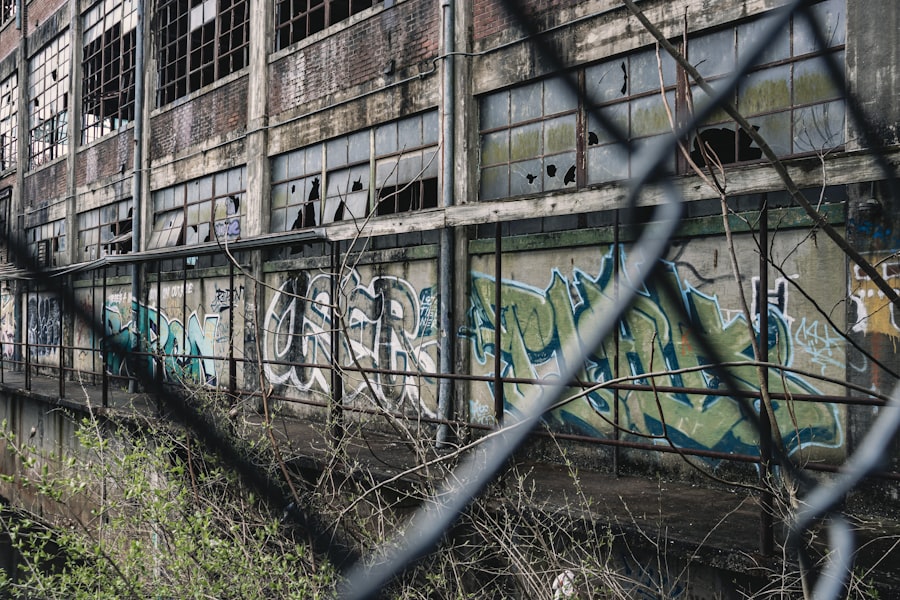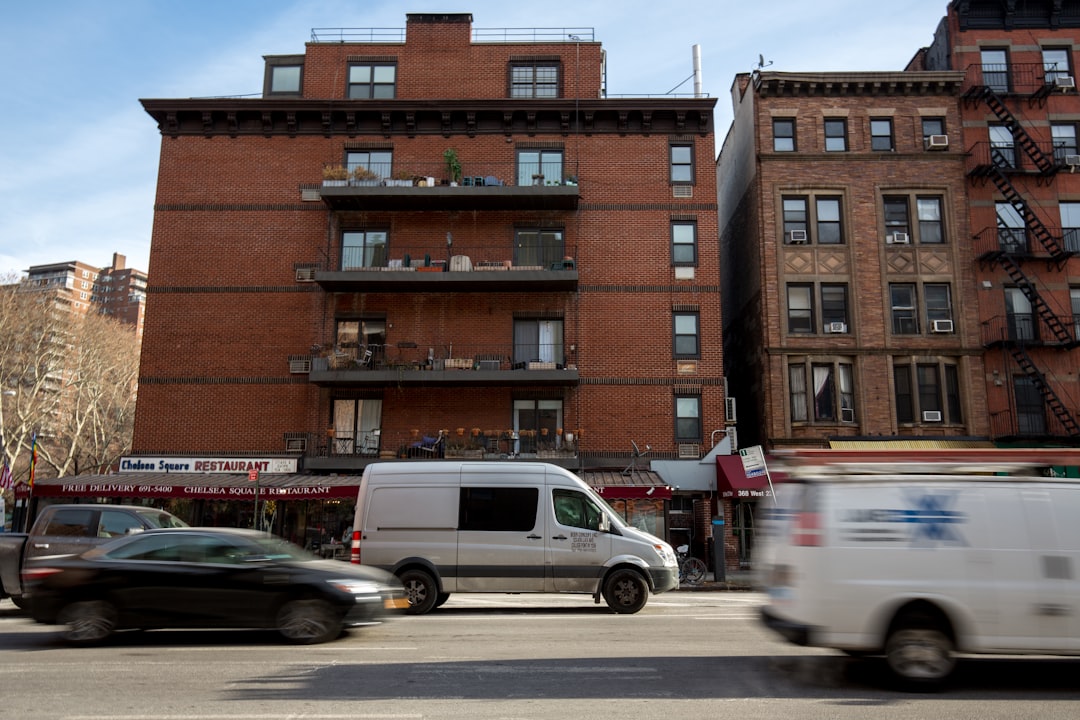The Bronx, one of New York City’s five boroughs, is a vibrant tapestry of culture, history, and resilience. Known for its rich contributions to music, art, and sports, it is home to the famous Yankee Stadium and the birthplace of hip-hop. The Bronx is often characterized by its diverse population, with a mix of ethnicities and cultures that contribute to its unique identity.
Despite its cultural significance, the borough has faced numerous challenges over the years, including economic hardships and social disparities that have shaped the lives of its residents. The Bronx is not just a geographical location; it is a community with a deep sense of pride and history. From the lush greenery of Pelham Bay Park to the bustling streets of Fordham Road, the borough offers a blend of urban life and natural beauty.
However, beneath this vibrant exterior lies a complex narrative of struggle and resilience. The Bronx has often been overlooked in discussions about urban development and economic opportunity, leading to a need for comprehensive understanding and action to address its challenges.
Key Takeaways
- The Bronx is a diverse borough in New York City with a rich cultural history and a vibrant community.
- Historical economic neglect has led to disparities in infrastructure, public services, employment, wages, housing, and education.
- Disparities in employment and wages have contributed to economic challenges for residents of The Bronx.
- Gentrification has led to housing issues and displacement of long-time residents in The Bronx.
- Health disparities and educational challenges are significant issues facing the community in The Bronx.
Historical Economic Neglect
Historically, The Bronx has been subjected to economic neglect that has left lasting scars on its communities. In the mid-20th century, the borough experienced significant population shifts as many residents moved to suburban areas in search of better opportunities. This exodus was exacerbated by the decline of manufacturing jobs and the rise of deindustrialization, which stripped the borough of its economic backbone.
As businesses closed and jobs disappeared, The Bronx became synonymous with urban decay, leading to a cycle of poverty that has persisted for decades. The neglect was not merely economic; it was also systemic. Government policies often failed to address the needs of The Bronx’s residents, leading to disinvestment in infrastructure and public services.
The lack of attention from both local and federal authorities contributed to a perception that The Bronx was a place to be avoided rather than a community worthy of investment. This historical context is crucial for understanding the current challenges faced by the borough and its residents.
Impact on Infrastructure and Public Services

The impact of historical economic neglect on The Bronx’s infrastructure and public services is evident in many aspects of daily life. Public transportation systems, once robust and reliable, have suffered from years of underfunding and mismanagement. Residents often face long commutes due to delays and overcrowding on trains and buses, which can hinder access to employment opportunities and essential services.
The aging infrastructure has also led to safety concerns, with crumbling roads and bridges posing risks to both pedestrians and drivers. Public services such as healthcare, education, and sanitation have also been adversely affected by years of neglect. Hospitals in The Bronx are often overwhelmed, struggling to provide adequate care to a population that faces significant health disparities.
Schools are frequently under-resourced, lacking the funding necessary to provide students with quality education and support. This combination of inadequate infrastructure and public services creates a challenging environment for residents, perpetuating cycles of poverty and limiting opportunities for upward mobility.
Disparities in Employment and Wages
| Category | Employment Rate | Wage Gap |
|---|---|---|
| Gender | 78% | 20% |
| Race | 65% | 30% |
| Education Level | 85% | 15% |
Disparities in employment and wages are stark in The Bronx, reflecting broader trends of inequality that affect many urban areas across the United States. The borough has one of the highest unemployment rates in New York City, with many residents facing barriers to finding stable employment. Factors such as limited access to job training programs, discrimination in hiring practices, and a lack of transportation options contribute to these challenges.
As a result, many individuals are forced into low-wage jobs that do not provide sufficient income to support their families. Wage disparities are particularly pronounced among different demographic groups within The Bronx.
This economic inequality not only affects individual families but also has broader implications for the community as a whole. When residents struggle to make ends meet, it can lead to increased reliance on social services, further straining public resources and perpetuating cycles of poverty.
Housing and Gentrification
Housing in The Bronx presents a complex landscape marked by both challenges and opportunities. For many residents, affordable housing is increasingly difficult to find as gentrification takes hold in certain neighborhoods. While gentrification can bring investment and revitalization, it often comes at the cost of displacing long-time residents who can no longer afford rising rents.
This phenomenon has sparked debates about the balance between development and preserving the cultural fabric of communities. The housing crisis in The Bronx is compounded by issues such as overcrowding and substandard living conditions. Many families live in cramped apartments with inadequate facilities, leading to health concerns and diminished quality of life.
Efforts to address these housing challenges must consider the needs of existing residents while also promoting sustainable development that benefits the entire community. Finding solutions that prioritize affordability and accessibility is essential for ensuring that The Bronx remains a place where all residents can thrive.
Educational Challenges

Educational challenges in The Bronx are multifaceted, reflecting broader systemic issues within the public education system. Schools in the borough often face significant funding disparities compared to those in more affluent areas of New York City. This lack of resources can result in overcrowded classrooms, outdated materials, and limited access to extracurricular activities that enrich students’ learning experiences.
As a result, students in The Bronx may not receive the same quality of education as their peers in other parts of the city. Moreover, socioeconomic factors play a significant role in shaping educational outcomes for students in The Bronx. Many families face challenges such as food insecurity, unstable housing situations, and limited access to healthcare, all of which can impact a child’s ability to succeed academically.
Community organizations have stepped in to provide support services aimed at addressing these barriers, but systemic change is necessary to ensure that all students have equal access to quality education.
Health Disparities
Health disparities are a pressing issue in The Bronx, where residents face significant challenges related to access to healthcare and overall well-being. The borough has some of the highest rates of chronic illnesses such as diabetes, asthma, and obesity in New York City. These health issues are often exacerbated by environmental factors such as pollution and limited access to healthy food options.
Many neighborhoods lack grocery stores that offer fresh produce, leading residents to rely on convenience stores that may not provide nutritious choices. Access to healthcare services is another critical concern for residents of The Bronx. Many individuals lack health insurance or face barriers to accessing care due to cost or transportation issues.
Hospitals in the borough are often overwhelmed with patients, making it difficult for individuals to receive timely treatment for their health concerns. Addressing these health disparities requires a comprehensive approach that includes improving access to healthcare services, promoting healthy lifestyles, and addressing environmental factors that contribute to poor health outcomes.
Community Organizations and Activism
Community organizations play a vital role in advocating for change and supporting residents in The Bronx. These grassroots organizations work tirelessly to address various issues such as housing insecurity, educational inequities, and health disparities. By providing resources, support services, and advocacy efforts, they empower residents to take an active role in shaping their communities.
Many organizations focus on building coalitions among diverse groups to amplify their voices and create meaningful change. Activism in The Bronx has a rich history rooted in social justice movements that seek to address systemic inequalities. Residents have come together to advocate for better housing policies, improved public services, and equitable access to education and healthcare.
This spirit of activism continues today as community members mobilize around pressing issues affecting their neighborhoods.
Government Initiatives and Policies
Government initiatives aimed at revitalizing The Bronx have emerged over the years as policymakers recognize the need for targeted investment in the borough. Various programs have been implemented to address issues such as affordable housing development, job training initiatives, and infrastructure improvements. These efforts aim not only to stimulate economic growth but also to enhance the quality of life for residents by addressing long-standing challenges.
However, the effectiveness of these initiatives often depends on community engagement and input from residents themselves. Policymakers must prioritize collaboration with local organizations and community members to ensure that initiatives align with the needs and aspirations of those they aim to serve. By fostering inclusive decision-making processes, government efforts can be more impactful in creating sustainable change within The Bronx.
Economic Revitalization Efforts
Economic revitalization efforts in The Bronx have gained momentum as stakeholders recognize the potential for growth within the borough. Initiatives focused on attracting new businesses, supporting local entrepreneurs, and enhancing workforce development are crucial components of this revitalization strategy. By fostering an environment conducive to economic growth, The Bronx can create job opportunities that benefit its residents while also stimulating local economies.
Additionally, investment in infrastructure improvements is essential for supporting economic revitalization efforts. Upgrading transportation systems, enhancing public spaces, and improving access to technology can create an environment that attracts businesses while also benefiting residents’ quality of life. Collaborative partnerships between government agencies, private sector stakeholders, and community organizations are vital for ensuring that revitalization efforts are inclusive and equitable.
The Future of The Bronx
The future of The Bronx holds both challenges and opportunities as it navigates the complexities of urban development and social change. While historical economic neglect has left deep scars on the borough’s communities, there is also a growing sense of hope fueled by grassroots activism and community engagement. As residents continue to advocate for their needs and aspirations, there is potential for transformative change that prioritizes equity and inclusivity.
Looking ahead, it will be essential for policymakers, community organizations, and residents to work collaboratively toward a shared vision for The Bronx’s future. By addressing systemic inequalities while fostering economic growth and investment in public services, The Bronx can emerge as a model for urban revitalization that honors its rich history while embracing new possibilities for all its residents. Through collective action and commitment to social justice, The Bronx can pave the way for a brighter future where every resident has the opportunity to thrive.
In recent years, the Bronx has faced significant economic challenges, often being overshadowed by other boroughs in terms of development and investment. A related article that delves into the economic neglect of the Bronx can be found on MyGeoQuest. This article explores the historical and systemic factors contributing to the economic disparities in the Bronx, highlighting the need for targeted policies and investments to revitalize the area. For more insights, you can read the full article by visiting this link.
WATCH THIS! The Real Cost of NYC Living: Your Wallet, Sanity, and Subway Survival Skills
FAQs
What is the economic situation in the Bronx?
The Bronx has historically faced economic neglect, with higher rates of poverty and unemployment compared to other boroughs in New York City.
What are some factors contributing to the economic neglect in the Bronx?
Some factors contributing to the economic neglect in the Bronx include disinvestment, lack of access to quality education and healthcare, and limited job opportunities.
How does economic neglect impact the residents of the Bronx?
Economic neglect can lead to limited access to resources and opportunities, higher rates of poverty and unemployment, and disparities in health and education outcomes for residents of the Bronx.
What efforts are being made to address economic neglect in the Bronx?
There are various community organizations, government initiatives, and economic development projects aimed at addressing economic neglect in the Bronx, including efforts to increase access to affordable housing, improve educational opportunities, and create job growth.
